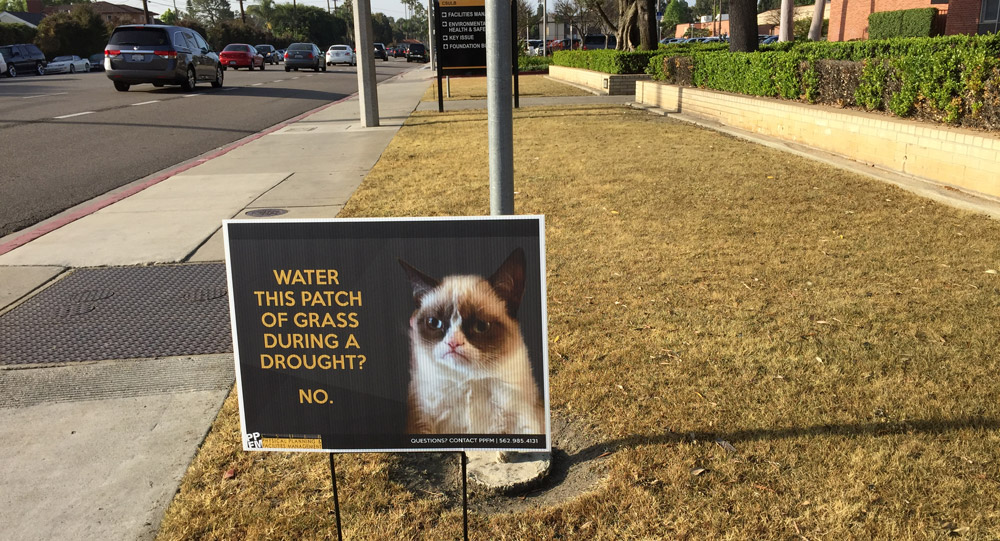Water & Landscaping
Water Conservation
Drought is an ongoing challenge for our region, but CSULB has developed a Water Action Plan and takes steps to prioritize water conservation, particularly of potable water. Efforts include transitioning landscape areas to drought tolerant plants, using reclaimed water for irrigation, and installing low-flow urinals and touch free automatic faucets with low flow restrictors.
Visit our Drought Response page for a complete list of CSULB's water conservation measures.

Ensuring that the outdoor areas throughout our 322 acre campus are healthy, safe, aesthetically appealing, and resource efficient is another way that we demonstrate our commitment to creating a sustainable campus environment that is conducive to learning.
Landscape Irrigation
Water is essential for keeping our campus environment healthy and green, but conserving this precious, limited resource is still a top priority. A few of the water conservation strategies currently in place include:
- Utilizing weather-based irrigation system
- Utilizing reclaimed water for irrigation
- Installing more efficient MP rotator sprinkler heads
- Utilizing mulch to help preserve moisture in the soil
Visit our Drought Response page for a complete list of our water conservation measures.
Campus Forest
The CSULB campus is home to an urban forest made up of nearly 7000 trees from a diverse mix of botanical species. Trees provide many benefits to people and the environment, such as:
- Filtering harmful pollutants from the air
- Providing shade to people and buildings (meaning less energy must be used to cool buildings)
- Sequestering carbon that would otherwise be emitted into the atmosphere
- Providing habitat for birds and other animal life
- Helping people feel connected to nature and promoting a general sense of well being
Integrated Pest Management
CSULB is committed to applying the principles of Integrated Pest Management (IPM) when dealing with indoor and outdoor pests. IPM is defined as managing outdoor pests (plants, fungi, insects and/or animals) in a way that protects human health and the surrounding environment and that improves economic returns through the most effective, least-risk option.
Core elements of IPM include:
- Use of least-toxic method for monitoring and control. For example sticky traps or non-toxic bait stations
- Minimum use of chemicals
- Use of chemicals and pesticides only in targeted locations and for targeted species
- Routine inspection and monitoring
- Proactive communication
To ensure building users are informed and empowered to care for their own health with regard to pest management activities, IPM includes procedures for notifying occupants and visitors in advance of any pesticide application other than a least-toxic pesticide.





